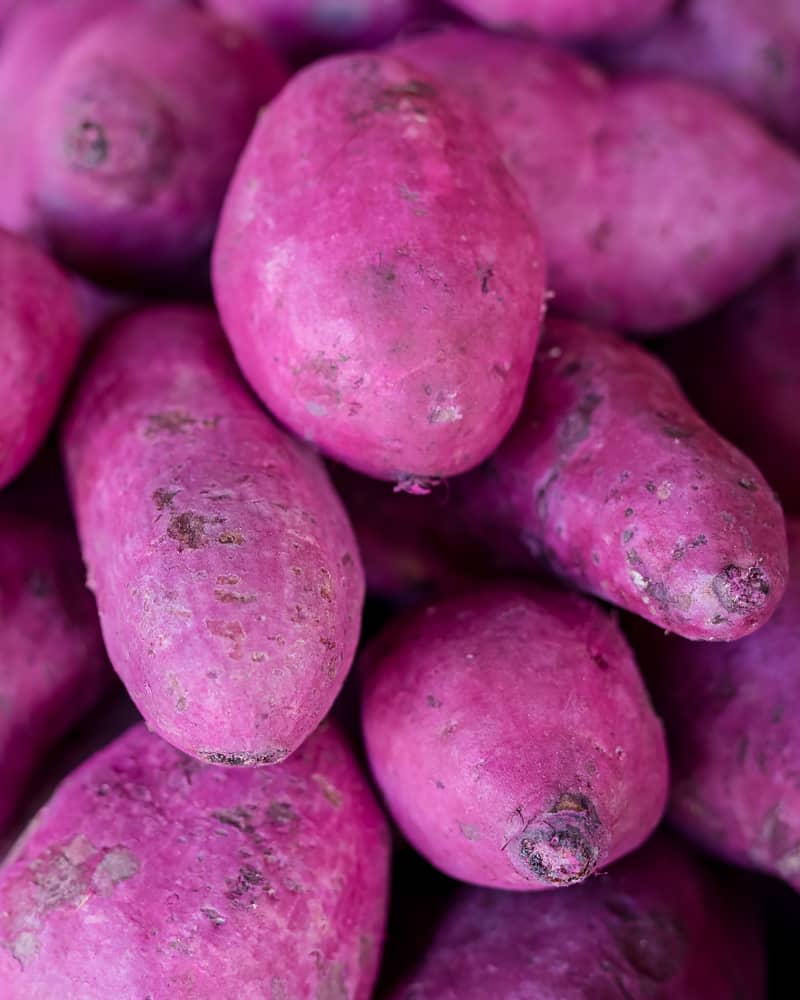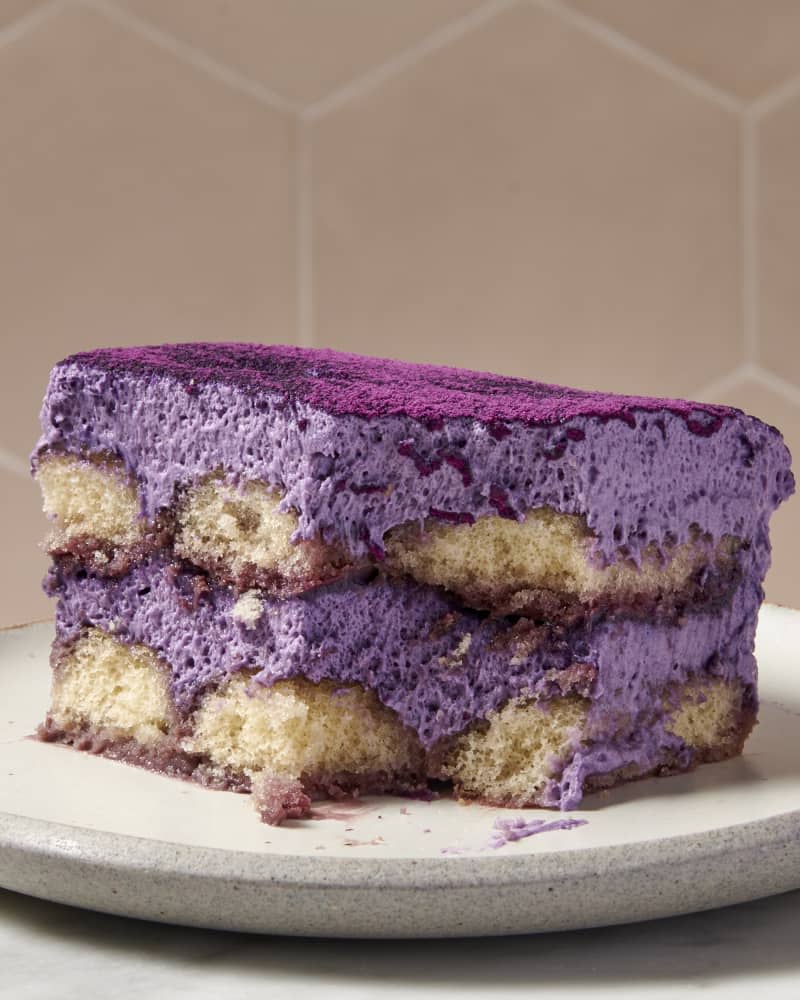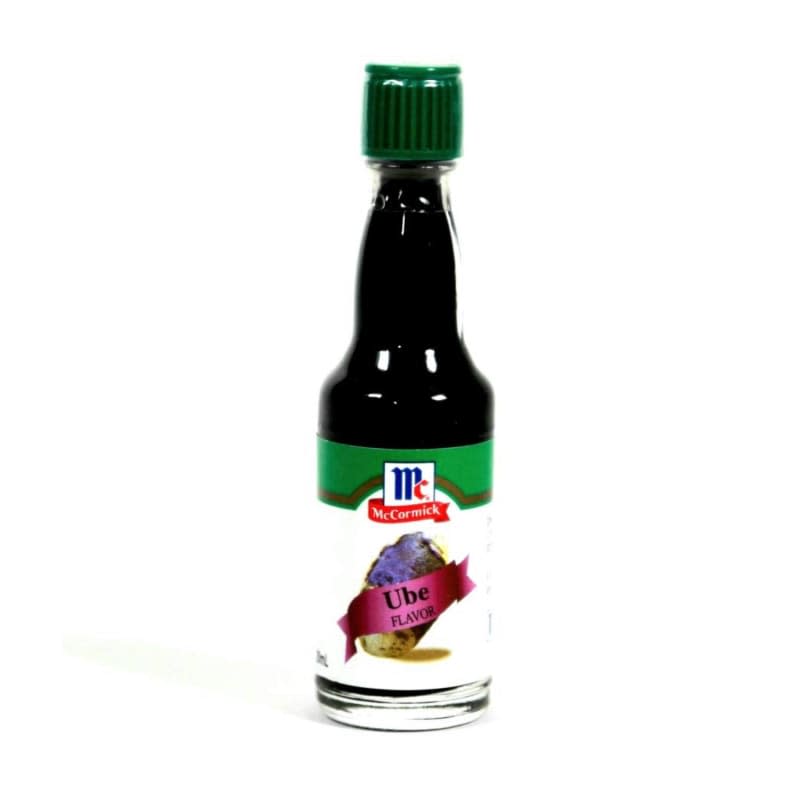Everything You Need to Know About Ube

The word “ube” (pronounced oo-bay) seems ubiquitous nowadays. At Trader Joe’s, you’ve probably seen items like Ube Mochi Pancake & Waffle Mix and Ube Ice Cream. In some restaurants and pastry shops across the U.S., especially in areas with Filipino communities, you may find ube used in purple-tinted baked goods, desserts and even burger buns.
While ube has grown in popularity in the U.S. during the past decade, it’s actually long been a staple of Filipino cuisine.
What Does Ube Taste Like?
Ube (meaning “tuber” in Tagalog) is a tuberous purple root vegetable that originates from Southeast Asia. It is also known as dioscorea alata, a species of yam that’s native to the Philippines. Dioscorea alata is commonly referred to as purple yam, water yam, or violet yam.
Ube has a naturally sweet flavor, and softens when it bakes. Ube is commonly used in Filipino cuisine to make various desserts and confections. Because fresh ube can be difficult to source, most recipes for it — like Ube Tiramisu, Ube Swirl Ice Cream, and Ube Crinkle Cookies — call for a byproduct, such as ube extract or ube spread.
Where Does the Word “Ube” Come From?
There’s not a lot of information as to where the term ube comes from, but according to Felice Prudente Sta. Maria, a Filipino food historian, “the first Tagalog and Spanish dictionary published in 1613 mentioned ube (or uvi) as a type of camote (sweet potato) that belonged to the Convolvulaceae family. But later on, it was classified a yam, meaning it is of the Dioscorea family,” as quoted in the Culture Trip.
What Does Ube Look and Taste Like?
Fresh ube has grayish-brown, bark-like skin on the outside, with a shape ranging from round to cylindrical. When you cut it, you’ll find a deep, dark purple flesh that’s watery in appearance.
The tuber root vegetable cannot be eaten raw because it contains some toxins, so it’s highly recommended to cook it thoroughly. When cooked, the texture becomes soft and sticky, and it has a sweet, slightly earthy, and nutty flavor.
“Fresh ube has the flavor of a rich, earthy vanilla with some notes of coconut,” says Abi Balingit, author of the cookbook Mayumu: Filipino American Desserts Remixed. “Its flavor is quite delicate, so I like to cook it down with coconut milk and condensed milk.”
Is Ube the Same as Taro?
Ube is not the same as taro. The two foods are often confused for each other, and while they do have somewhat similar tastes, the two are very different foods. Taro is a root vegetable grown from a tropical taro plant.
Taro has a brown outer skin and a white flesh with purple specks. Unlike ube, taro is not one of the nearly 600 varieties of yams. When taro is cooked, it becomes soft, drier, and somewhat grainy, and it turns light purple. It tastes milder and sweeter than ube.
Can You Buy Fresh Ube in the U.S.?
Fresh ube is rarely available in the U.S., as they are considered an invasive species. If you get lucky, you may be able to find fresh ube in the produce sections of Filipino and Asian grocery stores, although frozen ube is much easier to source. Byproducts of the root vegetable are also readily available, such as ube extract and sweetened condensed milk. You can also find it in a spread form called ube halaya (‘halaya’ comes from the Spanish jalea, which means “jelly”). These forms work great in baking and dessert-making.
How to Use Ube
Ube is a great way to give color to foods, including cakes, ice creams, pastries, and baked goods. Fresh ube can be prepared in different ways: boiled, baked, mashed, or fried. It can be used in a variety of dishes in place of other starchy vegetables, including soups, stir-fries, and stews.



